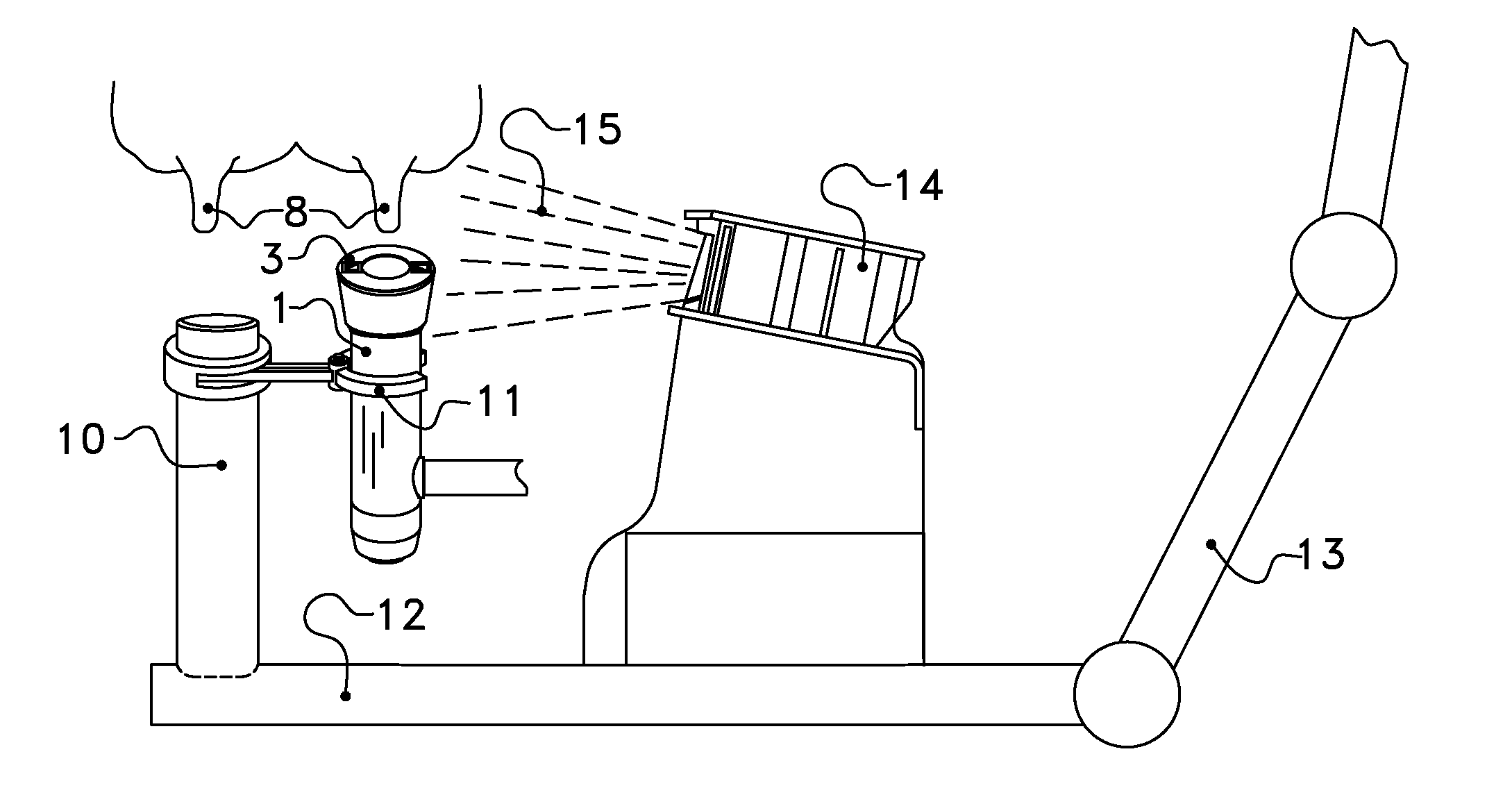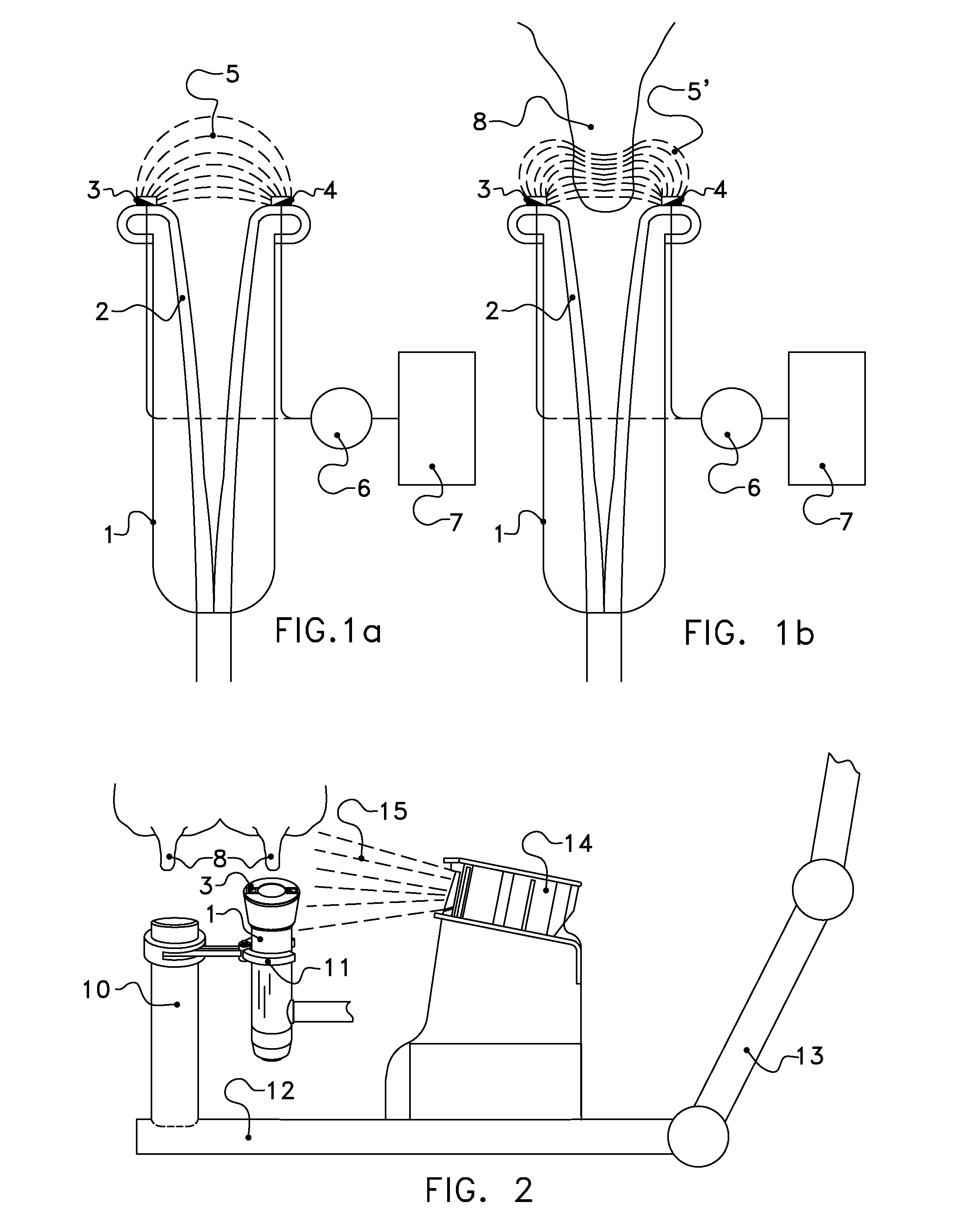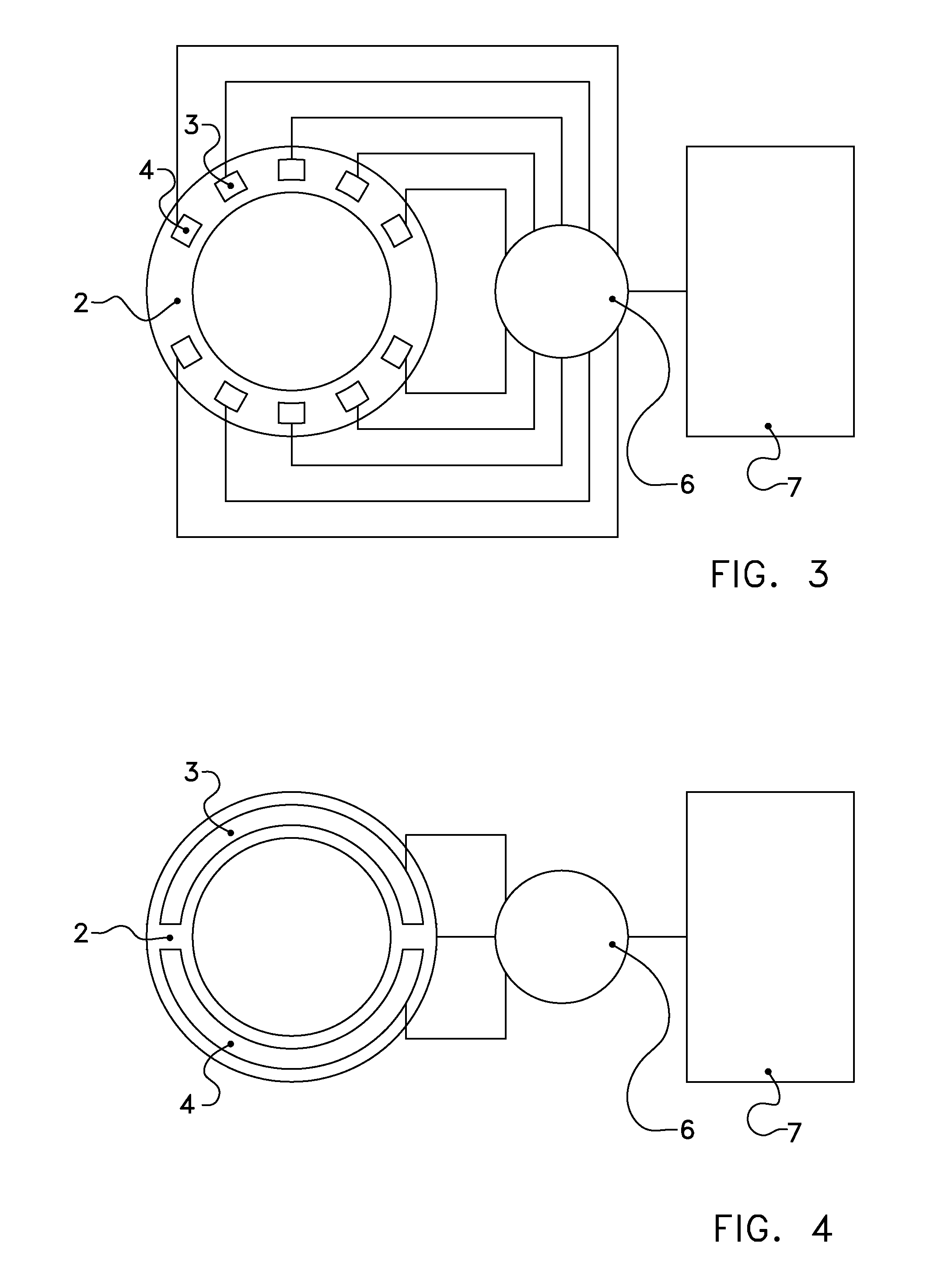[0007]It is an object of the invention to provide a system of the type mentioned in the
preamble which has a higher reliability of connecting.
[0009]In particular, the capacitive sensor is configured to measure the capacitance between two electrodes. According to the invention, a quantity connected with the capacitance between the electrodes, and in particular the capacitance between two electrodes, is measured as the control quantity. The insight to come to this invention is connected with the idea that this quantity changes when a teat comes into the direct environment of the sensors, and will change the most when the teat is located in the centre between the sensors. In particular the capacitance between two sensors will change by bringing therebetween water-containing and conductive tissue, such as a teat. The effect is imaginable by considering the teat as a dielectricum between the sensors, which serve in that case as
capacitor plates. As a direct and proper position relation between teat and sensors becomes possible in the above-mentioned manner, it will be possible to achieve a high reliability of connecting if said sensors are efficiently positioned. In addition to capacitance, another quantity could be measured as well, such as an
electric field intensity at an applied
voltage between the electrodes, a resistance therebetween, etcetera. By “capacitive sensor” is meant in this case a “sensor for measuring a capacitance or quantity connected therewith”, and not necessarily a sensor that is linked in a capacitive manner to a circuit or the like.
[0012]The electrodes may be provided on the teat cup or the teat cup liner, for example by means of glue. Advantageously, the electrodes may also be provided by
casting or by otherwise enveloping with material. This protects the electrodes very well from external influences, such as short-circuit by
moisture, or
corrosion and the like, while it has hardly any effect on the measurement of the electric quantity such as capacitance. It is also possible to glue the electrodes or to provide them otherwise on the teat cup or teat cup liner, and to cover them subsequently with a protective layer, in order to achieve a comparable effect.
[0014]In one embodiment, there are provided more than two electrodes, wherein the sensor device is configured to select manually or automatically a pair of electrodes to measure the electric quantity therebetween. It should be noted that, in this application, the sensor device, at any rate at least the system as a whole, is provided with a control device which is configured to process the signals from the electrodes into a value for the electric quantity. In the embodiment mentioned here the sensor device, at least the control device, is suitable for selecting electrodes. It is thus possible to measure the electric quantity for a plurality of pairs of selected electrodes successively, or, if there are at least four electrodes, also simultaneously. The sensor device is then preferably configured to determine a teat position from the various measured values, for example from interpolation of different measurements. Advantageously, there are provided a large number of, for example, at least 6, and preferably 10 or more electrodes, of which at least two electrodes are capable of being mutually electrically coupled to form one
single electrode. There is thus formed an
electrode with a larger surface and a higher sensitivity, which results in a more accurate measurement. In one embodiment, the system is configured to couple the electrodes electrically to form two groups of immediate neighbours, which results in a much more sensitive system. Such a setting is in particular suitable for the global measurement in the beginning, in which case, of course, the distance is greater and the
signal is weaker. If the measured
signal exceeds a specific upper limit, the electrodes can be subdivided in order thus to enable a more precise measurement. The system is then advantageously configured to couple the electrodes, and to uncouple them if the measured electric quantity exceeds a specific upper limit.
[0018]In yet another embodiment, the system according to the invention further comprises an additional teat detection system. The teat cup positioning system is then advantageously configured to control the robot arm to connect the teat cup under the control of the 3D-sensor, the sensor device and the additional teat detection system. In this manner, optimum use can be made of the advantages of different systems. Many known teat detection systems, such as those based on optical or acoustic sensors, are able to properly recognize the teats of an animal, but are less reliable as regards the positioning of teat cup and teat at the proper distance, i.e. at a proper mutual relative position. On the other hand, the system according to the invention, with the sensors that, for example, measure the capacitance, is less efficient in determining a proper
mutual position if the distance is still great, but very appropriate if the distance has already become small. Therefore, a two or more stage control seems to be optimal.
 Login to View More
Login to View More  Login to View More
Login to View More 


